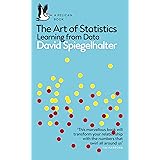Calculate Year-to-Date Values in Power BI
Calculate Year-to-Date Values in Power BI, When it comes to calculating Year-to-Date (YTD) values in Power BI, the easiest way is to leverage the TOTALYTD function in DAX.
This powerful function allows you to compute cumulative totals for a given period with minimal effort.
Here’s a step-by-step guide to show you how to use this function effectively:
Calculate Year-to-Date Values in Power BI
You can create a new measure to calculate the YTD values with the following syntax in DAX:
YTD Sales = TOTALYTD(SUM(my_data[Sales]), my_data[Date])This measure calculates the sum of the year-to-date values in the Sales column of a table named my_data. Let’s see how to use this in practice.
Example: Calculating YTD Values in Power BI
Suppose we have a table named my_data that contains sales information on various dates:
| Date | Sales |
|---|---|
| 01/01/2024 | 10 |
| 01/08/2024 | 14 |
| 01/13/2024 | 30 |
| … | … |
We aim to create a measure that calculates the sum of the YTD values in the Sales column.
Step-by-Step Instructions
- Navigate to the Table Tools Tab:
- Click on the
Table toolstab along the top ribbon. - Click on the
New measureicon.
- Create the Measure:
- Type the following formula into the formula bar:
DAX YTD Sales = TOTALYTD(SUM(my_data[Sales]), my_data[Date]) - This will create a new measure named
YTD Salesthat contains the sum of the YTD values in the Sales column of the table.
- Visualize the Data:
- Click on the
Report Viewicon on the left side of the screen. - Click on the
Tableicon under theVisualizationstab. - Drag
Date,Sales, andYTD Salesunder theColumnspanel.
This will produce a table that shows the Date, Sales, and Year-to-Date Sales values.
Interpreting the Results
From the table, you can see:
- Year to Date Sales up to 01/08/2024 is 10.
- Year to Date Sales up to 01/10/2024 is 24.
- Year to Date Sales up to 01/13/2024 is 54.
- And so on.
Conclusion
Using the TOTALYTD function in DAX is the most straightforward way to calculate year-to-date values in Power BI.
This method provides a concise and efficient means to track cumulative totals over a specified period, making your data analysis more insightful and actionable.
By following these steps, you can effortlessly incorporate YTD calculations into your Power BI reports and dashboards, enhancing your data visualization capabilities.



